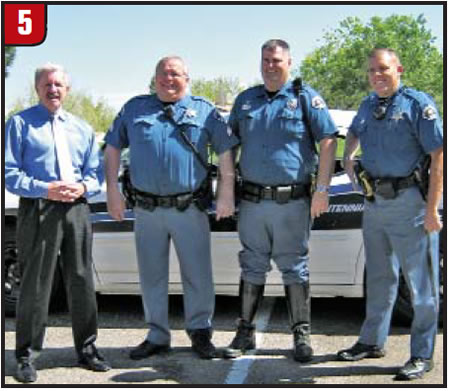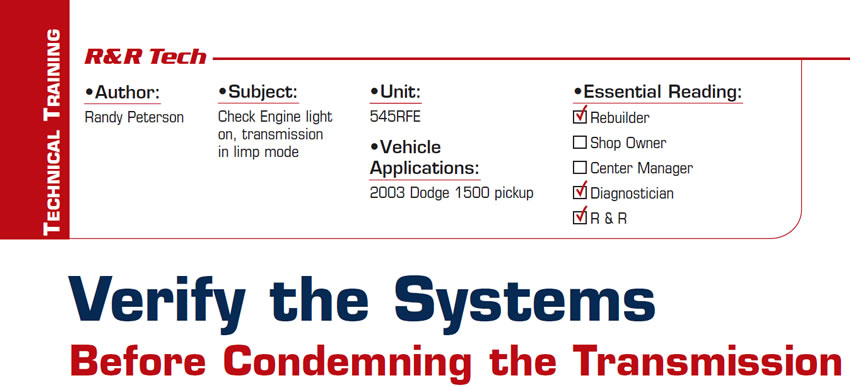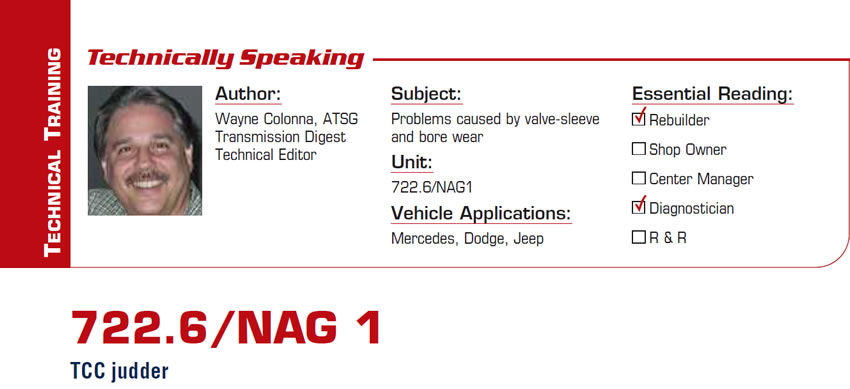Taking it to the Track, Part II: Our Charger Runs the Quarter Mile
In my previous installment (November 2011), I profiled our progress of “hot-rodding” a part-time sheriff’s car for our local one-fourth-mile drag strip, Bandimere Speedway.
Our speedway hosts a program called “Take it to the Track,” an initiative aimed at getting young drag racers off the street and onto a safer venue, and this 2006 Dodge Charger just needed its exhaust system installed before we could start the engine.

Verify the Systems Before Condemning the Transmission
A few months ago a customer brought in a 2003 Dodge 1500 pickup with a 5.7 Hemi engine and 545RFE transmission. The Check Engine lamp was on and the truck would not accelerate from a stop unless you put the transmission in second gear.

45/545RFE Pump Mystery Solved
This article refers specifically to Dodge trucks equipped with 45/545RFE transmissions. Because Dan’s shop works on many of these units, which are known to have pump issues, he stocks new pumps on the shelf. When Dan called he explained to me that when he disassembled one of these brand-new pumps he noticed that the screws that hold the pump spacer plate to the pump body were missing. He wanted to know whether this could be some kind of assembly-line error and whether he should exchange the pumps for new ones.

722.6/NAG 1
With the large number of 722.6 transmissions being used in both Mercedes vehicles and in Dodge and Jeep vehicles, where it is called the NAG 1, it is virtually certain that this transmission will end up in your shop for repairs. It may be that your shop refuses to work on Mercedes but Dodge and Jeep vehicles are all too welcome. And so it is in this way that if you have not worked on this transmission yet, you will. And it is not a bad unit to work on.

Cummins Diesel TCC Shudder: a New Twist
A 2001 Dodge Ram 2500 4×4, with a Cummins diesel engine and a 618 transmission, was brought to a transmission shop with a complaint of TCC shudder. Three to four months prior to coming to the shop, the customer noticed a change in the TCC-apply feel. He said that the TCC apply had suddenly become more aggressive or abrupt. The condition had worsened over the course of three to four months, until the start of the shudder issue.

